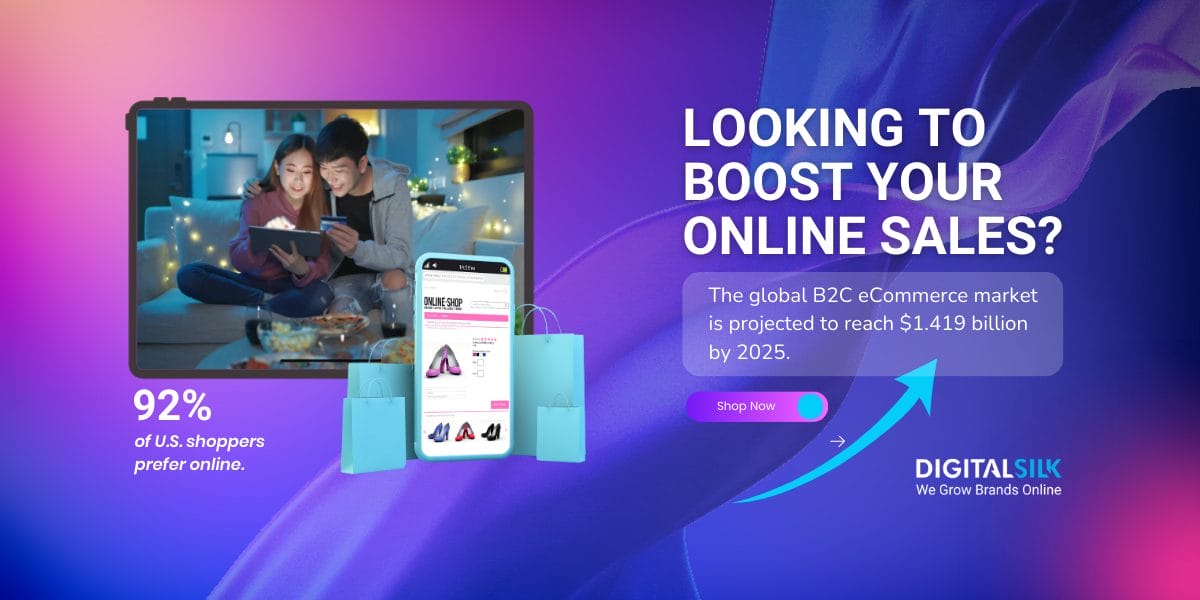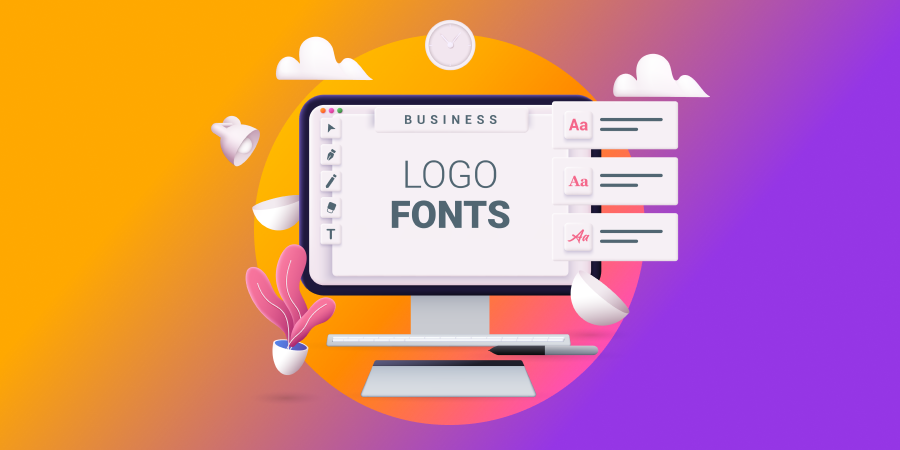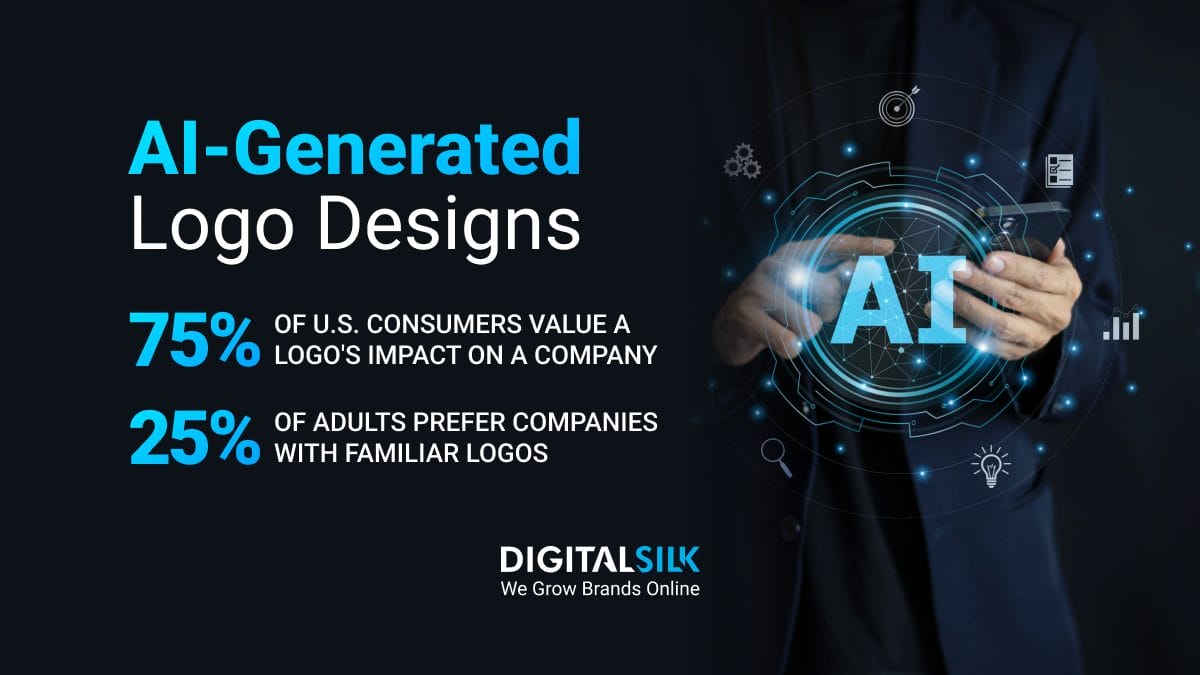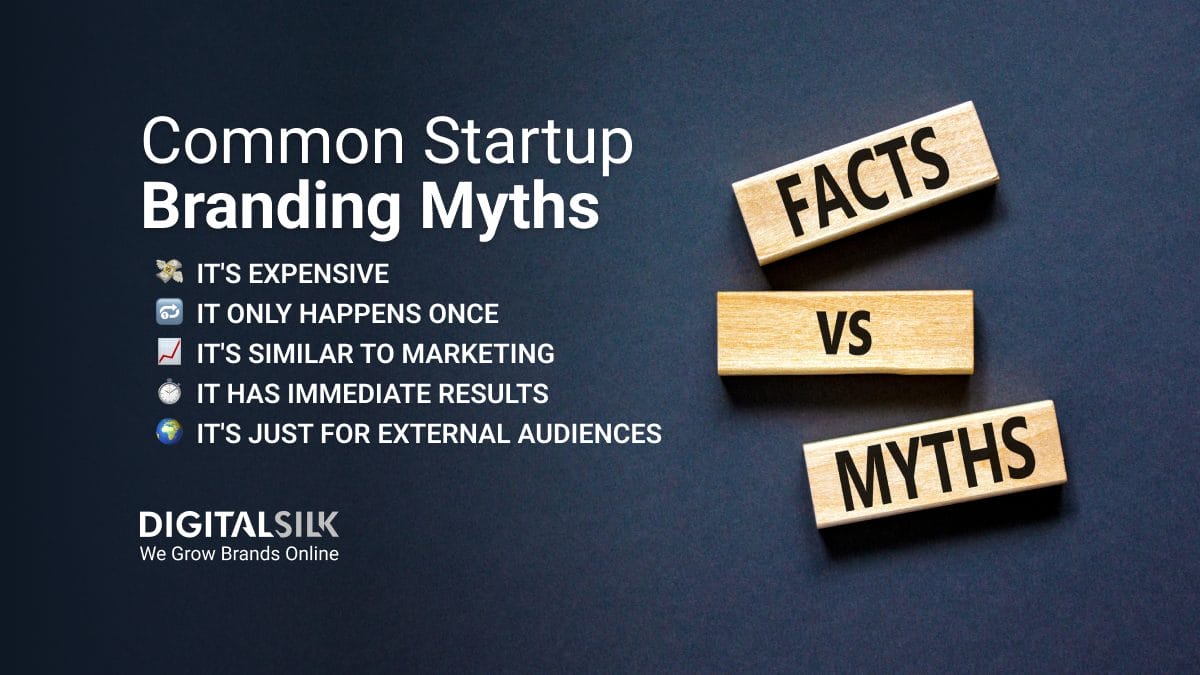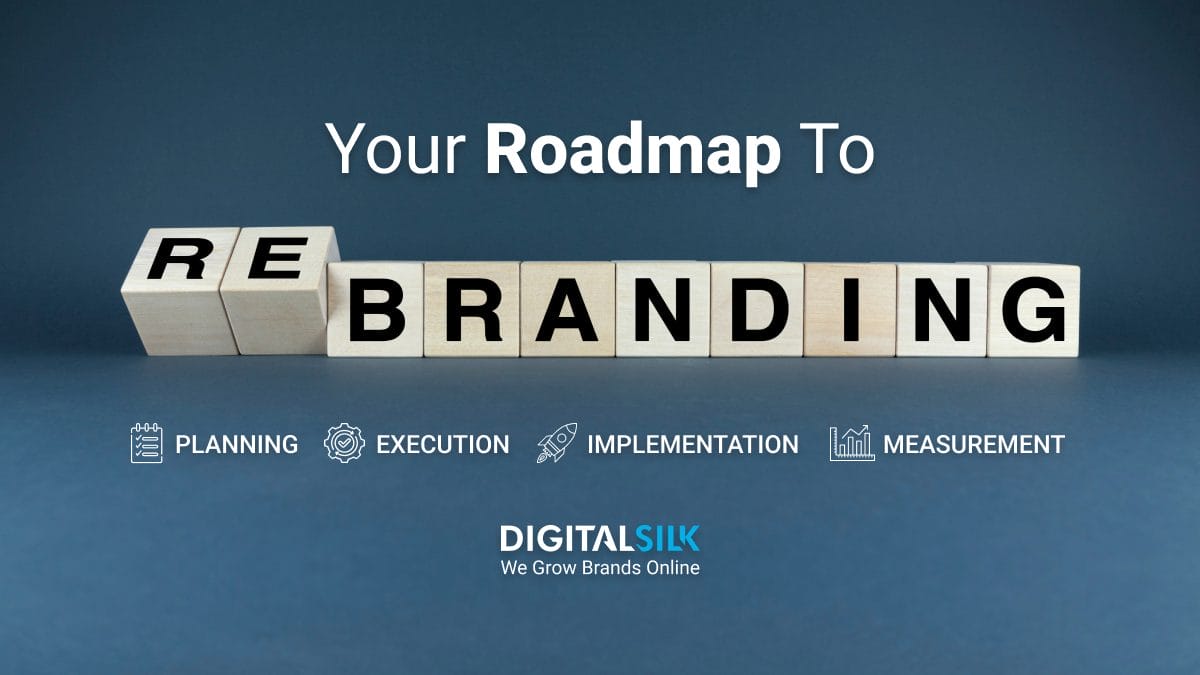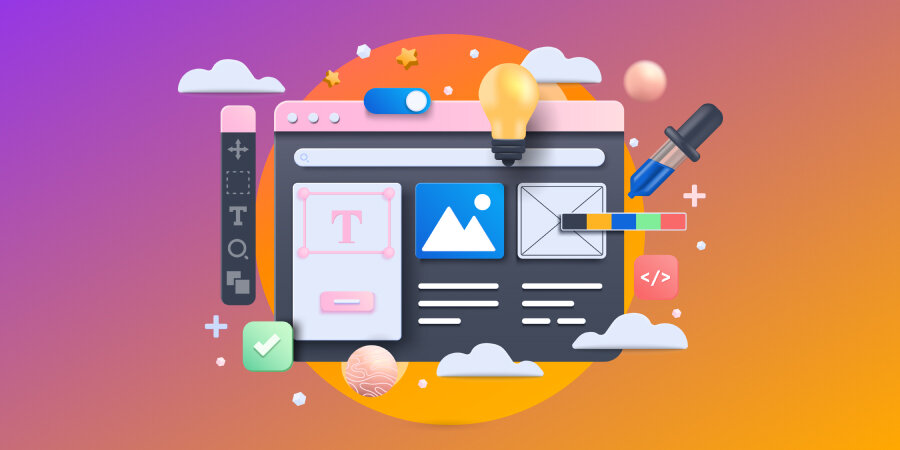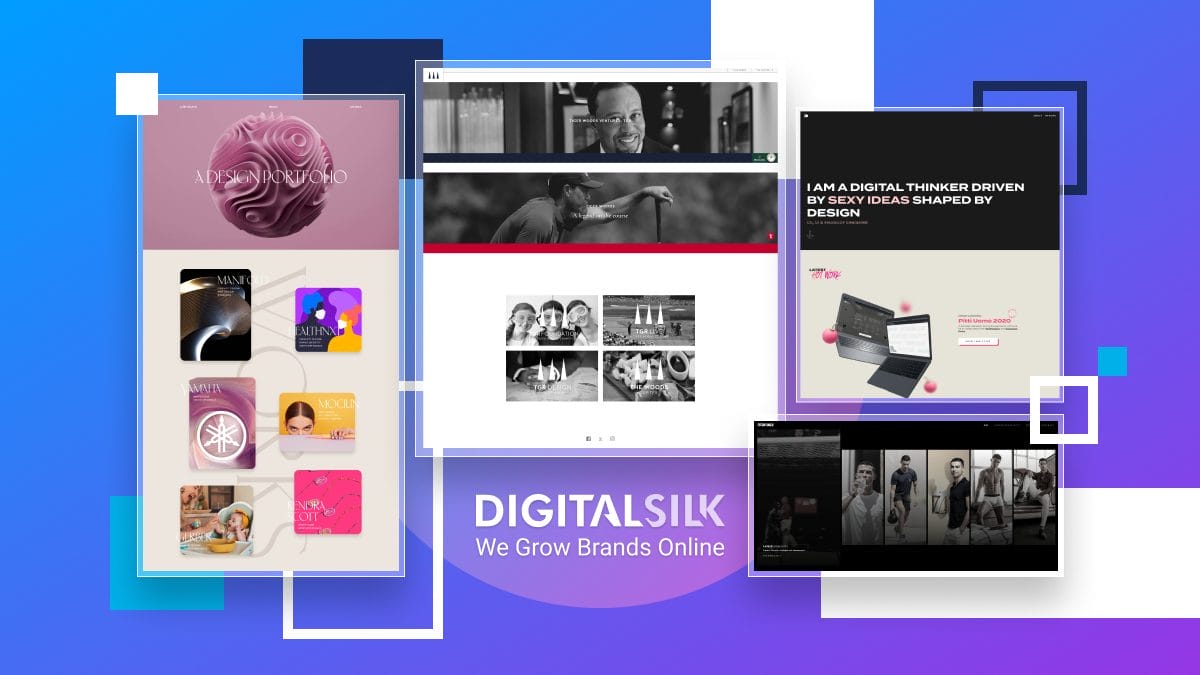The global B2C eCommerce market share is expected to reach $1.419 billion in 2025.
As the B2C industry continues to grow, so does the competition among businesses that want to attract and retain their customers.
In this post, we’ll examine 15 B2C eCommerce best practices to boost sales, increase engagement and drive revenue.
15 Best eCommerce B2C Practices
With over 27 million eCommerce websites online, it has become increasingly challenging for businesses to stand out in such a packed market as they compete for users’ attention.
Nowadays, there’s more pressure than ever to provide a user-friendly shopping experience, engaging on-page content and relevant products that meet the needs of the target audience.
We’ve compiled a list of 15 best practices to boost B2C sales, increase conversions and ultimately yield a greater Return on Investment (ROI).
1. Use Engaging Copy And Design
It takes just 2.6 seconds for users’ eyes to focus on a website’s key areas, meaning brands don’t have much time to make a strong impression.
Visitors should understand your website’s purpose within seconds of landing on it. To achieve this, use compelling on-page content and brand-specific design elements to guide customers through each stage of the sales funnel.
Add clear calls-to-action to prompt them to browse more, create a branded hashtag or slogan to improve brand recall, offer incentives like contests or small rewards to encourage sales and use high-quality visuals to showcase products.
Take Death Wish Coffee as an example. The brand embraces its dark and edgy brand persona through relevant visuals, red accent colors that create a sense of urgency and a cheeky rewards program in the bottom left corner.
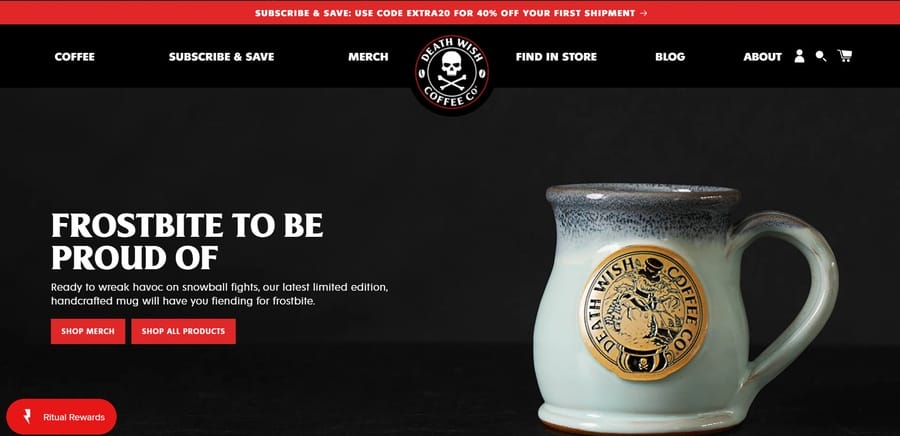
2. Create A User-Friendly Layout And Interface
Brands should streamline the user experience by offering human-centered layouts, intuitive navigation menus and simplified site structures.
Use visual hierarchy to highlight the most important information, create a consistent visual language with coherent color schemes and typography and optimize for both desktop and mobile users.
3. Add A Sticky Search Bar
This design principle involves using a fixed bar at the top of the website that stays in place as the user scrolls.
Its “sticky” nature allows users to quickly access relevant information and efficiently navigate the page without scrolling back up.
Puma makes fantastic use of this feature — its all-black sticky search bar remains within users’ eyesight even as they scroll to the bottom of the page.
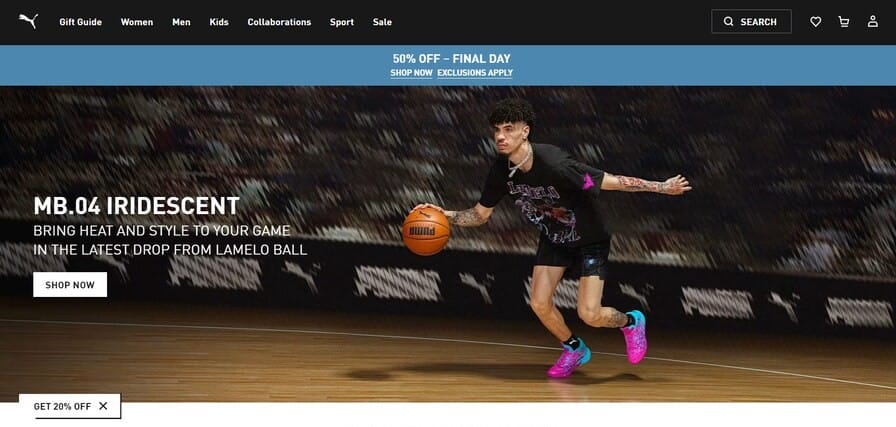
4. Optimize Website Loading Times
Bounce rates can increase by a whopping 123% if a website’s loading speed goes from one to five seconds.
Users waste no time on slow-loading websites and businesses should optimize their site loading speed to cater to impatient and often distracted customers.
Brands can do this by compressing image formats without sacrificing quality, using reliable hosting solutions, avoiding unnecessary animations and removing unused code.
5. Integrate On-Site Notifications
This subtle, social-media-inspired design element allows brands to share news, promotional offers and other notifications in a non-intrusive way.
In most cases, on-site notifications appear in the header section of a website as a bell icon, which users can click to view the latest information.
For example, We Are Jolies includes a discreet bell icon on the right side of its header so users can easily access important updates, such as sales or new product launches.
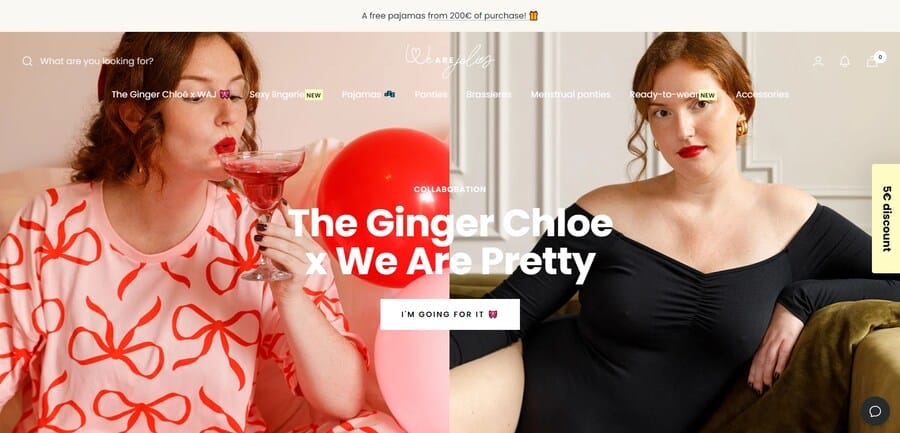
6. Use Targeted Pop-Ups
Businesses can use timely, brand-specific and engaging pop-ups to guide users toward completing desired actions.
The classic lightbox pop-up is perhaps the most common choice, as it dims the background and directs visitors’ attention to the pop-up itself.
On the other hand, floating bars are a more subtle alternative. They appear either at the bottom or sides of the page and don’t obstruct users’ views of the background.
7. Include Detailed Product Pages
Product landing pages offer detailed information about your products or services so visitors can make informed purchasing decisions.
With so much clickbait content and false promises, it’s important to be transparent about your brand values and how they align with your target audience’s pain points.
This can help you form lasting connections with consumers, build a loyal following and improve engagement rates and conversions.
8. Streamline Checkout Processes
The goal is to create quick and user-friendly transactions by eliminating unnecessary steps, such as creating an account and offering several payment methods to cater to users with different backgrounds and preferences.
Brands can implement single-page checkouts that offer a clear overview of the entire process. However, this option can become cluttered with fill-out forms, menus or buttons.
Another option is to use multi-page checkouts that break down the purchasing journey into smaller, more manageable sections, making it feel less overwhelming.
However, the downside is that users don’t exactly know what step comes next or how long the entire process will take.
For instance, Glossier offers customers a choice between an “Express Checkout” option with payment solutions like Google Pay and PayPal or the classic method of entering email and credit card details option.
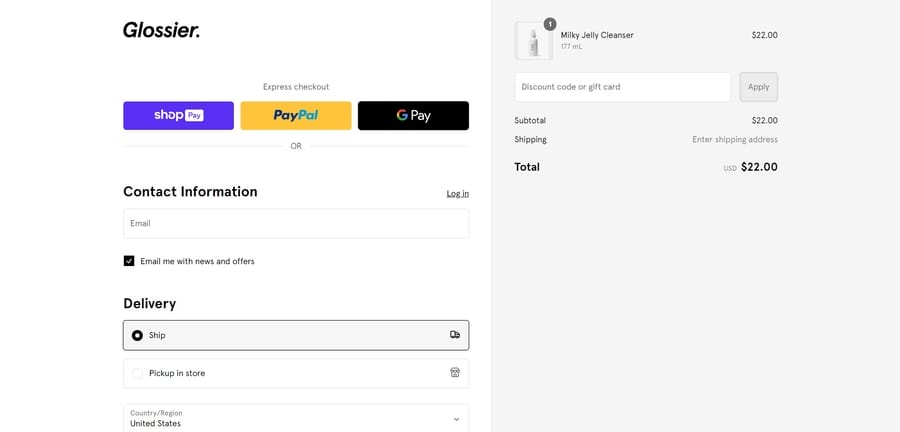
9. Send Cart Abandonment Emails
The average shopping cart abandonment rate is 86% globally.
This could be the result of several factors, including unexpected shipping costs, complicated checkout processes or simply browsing websites without the intention to purchase.
To minimize cart abandonment rates, brands can send targeted emails to remind customers to complete their purchases, offer discounts or free shipping and provide a direct link to their saved items.
10. Build Genuine Audience Relationships
71% of consumers expect to see personalized content from brands — whether that’s tailored product recommendations, relevant promotions or personalized emails.
Businesses that develop authentic, genuine and mutually trusting relationships with audiences have a higher chance of retaining customers and gaining loyal brand advocates.
Wendy’s is a prime example of friendly, humorous and personalized engagement with customers on social media.
By responding to comments, mentions and messages with a playful tone and witty quips, the brand has built a loyal following and strong brand identity.
11. Create A Concise And Risk-Free Return Policy
63% of consumers in the U.S. are more likely to shop at eCommerce stores that have a free return policy.
Businesses can give customers trust signals and reduce purchase anxiety by offering easy-to-understand and risk-free return policies.
This includes providing easy-to-follow instructions for returns, offering free return shipping and providing timely refunds.
If your products or services are reliable, having this policy improves the shopping experience and boosts consumer loyalty in the long run.
Not to mention the positive word of mouth and recommendations that come from satisfied customers.
12. Implement SEO Strategies
Using suitable search engine optimization (SEO) strategies can boost your online visibility, increase sales and improve customer engagement.
Brands should deliver brand-specific, timely and consumer-focused content by doing relevant keyword research, tracking website performance compared to the competition, aligning on-page content with users’ search intent and using short, descriptive URLs.
When brands appear higher in search results, they seem more trustworthy and reputable in the eyes of consumers.
As a result, businesses can increase the customer lifetime value, enrich the user experience and build positive brand associations.
13. Use Analytics And Personalization
Businesses can use behavioral data like browsing and purchase history, click patterns and marketing campaign engagement to gauge customer interests and preferences.
This way, brands can analyze which products or services appeal to the target audience the most and tailor their marketing efforts to target those specific pain points.
Brands can also use demographic data to build their ideal buyer persona, including basic customer information like age, gender, income, level of education or location.
This helps them assess the target demographic and segment customers into more manageable groups to personalize their messages and promotions.
Spotify makes use of its consumer data inventory by offering personalized playlists, daily mixes and music recommendations based on a user’s listening history.
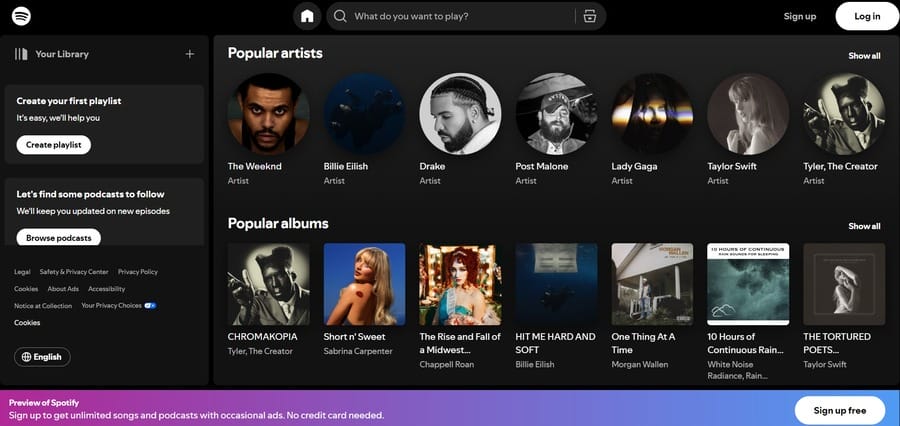
14. Offer Loyalty And Referral Programs
Loyalty programs offer tailored rewards for long-term customers whereas referral incentives encourage existing customers to invite their friends and family to try your products or services.
Both options bring more value to your clients, encourage repeat purchases and increase customer retention.
Brands can include exclusive discounts, free shipping, early access to new products or services and other personalized perks to make their customers feel appreciated.
15. Include Social Proof
69% of consumers would feel more inclined to purchase from a brand after reading positive written reviews.
Seeing like-minded individuals praise a product or service can incentivize potential customers to take action and create immediate trust with your brand.
Warby Parker dedicates an entire page of its website to consumer reviews, which helps validate their brand and products.
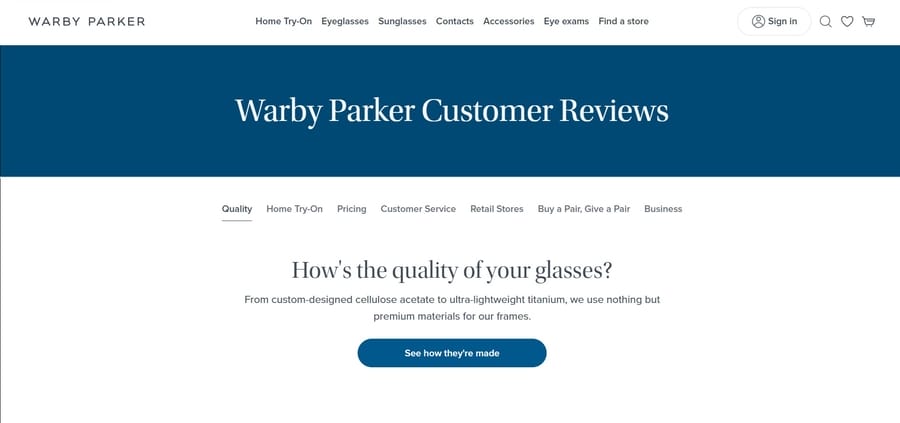
5 B2C eCommerce Website Types
The B2C eCommerce strategy of brands depends greatly on the type of website they operate. Some websites focus on specific niches, whereas others cater to a wider audience.
1. Direct Vendors
Also known as direct-to-consumer (DTC) sellers, this is the most common B2C eCommerce website type. It includes brands that sell products directly to their target audience through their website.
For instance, Converse sells its own shoes and clothing range directly to consumers through its website.
This way, the company has full control over its brand image, customer experience and price points.
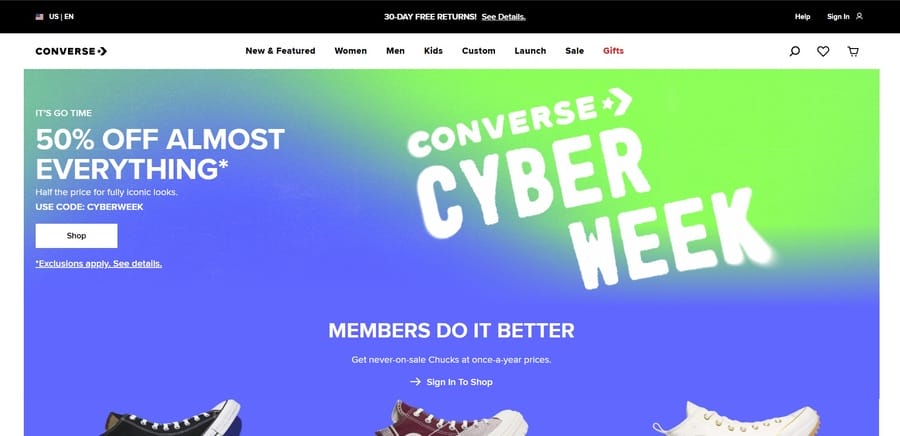
2. Online Intermediaries
As the name suggests, intermediaries act as the middleman between the brand and consumer. Given their multi-brand nature, they’re often referred to as online marketplaces because they allow users to compare different products before making a purchase.
Amazon, eBay and Etsy are common online retailers that fall under this category. These marketplaces provide a platform for multiple brands to sell their products, interact with customers, and manage their inventory.
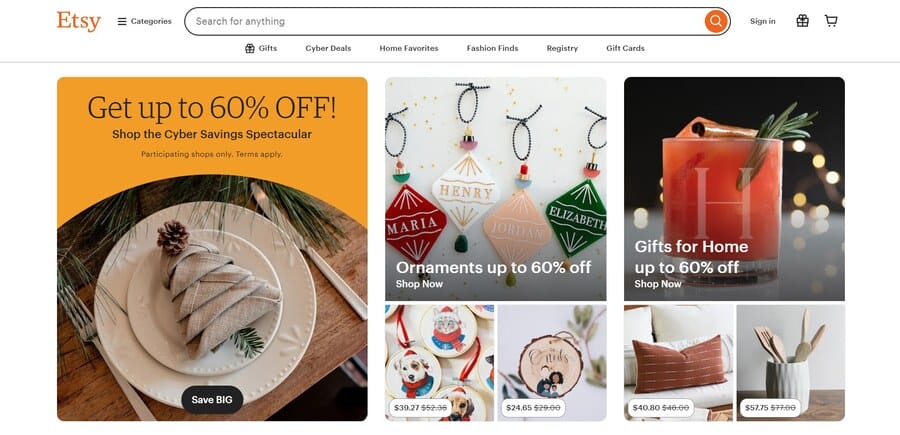
3. Ad-Based Services
These websites generate revenue through advertisements rather than direct sales. They attract consumers by offering free content and personalized ads based on user data, such as browsing history and demographic information.
For instance, YouTube offers mostly free video content for users but generates revenue by displaying ads before, during or alongside each video.
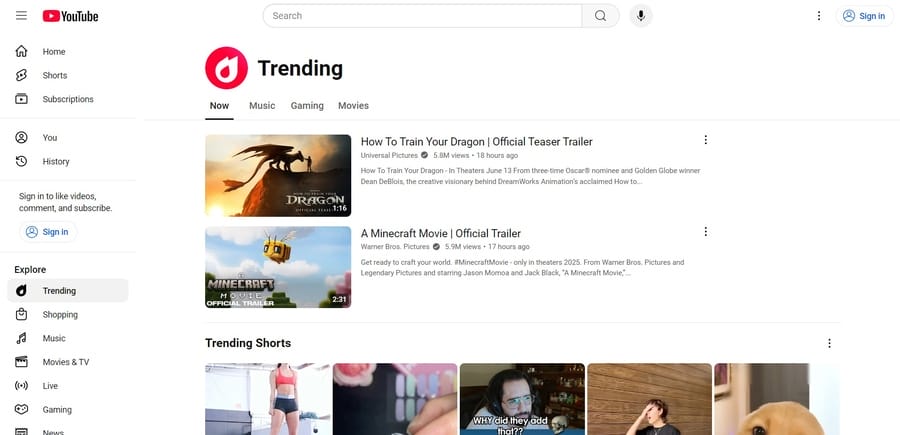
4. Community-Based Platforms
This B2C eCommerce website type relies on user-generated content to connect like-minded individuals and build a tight-knit community. They often feature forums, discussion boards and social media-like features for consumers to interact with each other.
Reddit is perhaps the most popular platform, with several subreddits catering to different interests and topics.
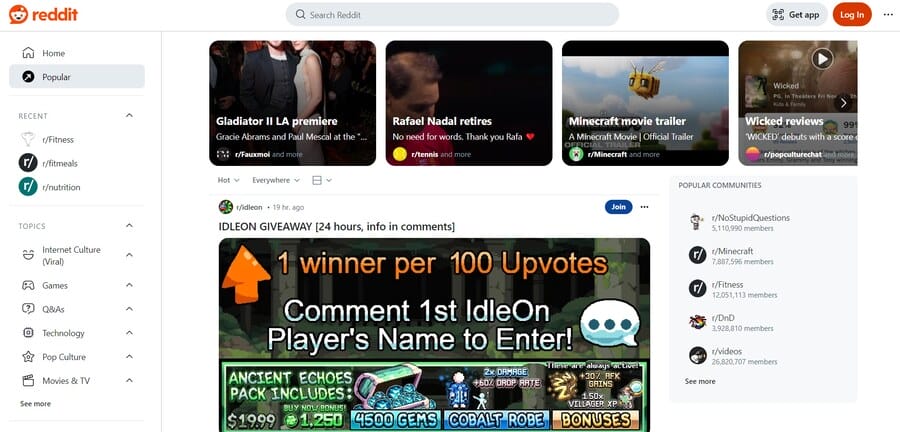
5. Fee-Based Sites
Platforms that require a subscription or a monthly fee to access content or services fall under this category. They generate revenue through membership fees and often offer exclusive or premium content to subscribers.
Disney+ is an extension of the company’s traditional media business. As a subscription-based streaming service, it offers access to various movies, shows and original content.
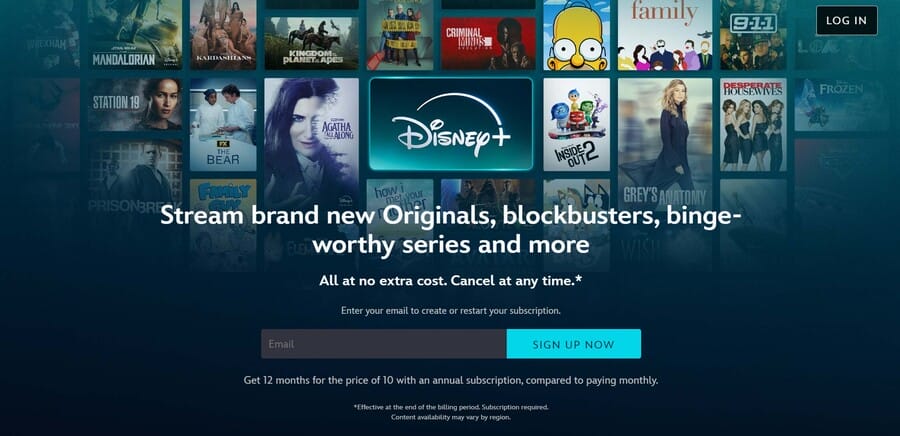
Benefits Of B2C eCommerce Stores
There are several benefits to starting an eCommerce business and focusing on B2C relations, including:
- Greater convenience: 92% of U.S. consumers prefer to shop online. It’s a convenient, easily accessible and timesaving shopping method — users don’t have to physically visit a store to find what they need.
- Wider selection of products: Online stores usually offer a much larger selection of products compared to traditional brick-and-mortar retailers. eStores aren’t limited by storage capacity or physical space, — they can hold as many products as needed.
- Better personalization: Online stores can use eCommerce personalization software to deliver tailored product recommendations based on past shopping habits, purchasing history or user data. This can enhance the user journey, increase customer satisfaction and improve overall sales.
- Lower overhead costs: eStores have lower maintenance costs than traditional retailers because they don’t require physical storefronts, staff or utilities. This allows businesses to offer more competitive pricing, better customer service and faster shipping.
- Increased audience reach: Since users can access eCommerce stores anywhere and at any time, there’s a higher chance of reaching a wider audience. Online stores can reach customers globally, breaking geographical barriers and allowing businesses to tap into new markets.
Boost Your B2C eCommerce Sales With Digital Silk
If you want a logo that showcases your company’s value and vision, matches your brand’s identity, drives recogIf you want to hit the ground running with your B2C sales, Digital Silk can help you create a user-centric, high-performing and results-driven eCommerce website.
Our team uses the latest industry best practices and years of meticulous research and experience to define your target audience’s pain points, offer relevant solutions and drive organic traffic.
As a full-service web design agency, our services include but aren’t limited to:
- Custom web design
- Custom web development
- eCommerce design and development
- eCommerce branding
- eCommerce advertising and social media marketing
For each project, we offer full project ownership, consistent and transparent communication and measurable results.
Have an eCommerce project in mind?
Contact our team, call us at (800) 206-9413 or fill in the Request a Quote form below to schedule a consultation.
"*" indicates required fields


